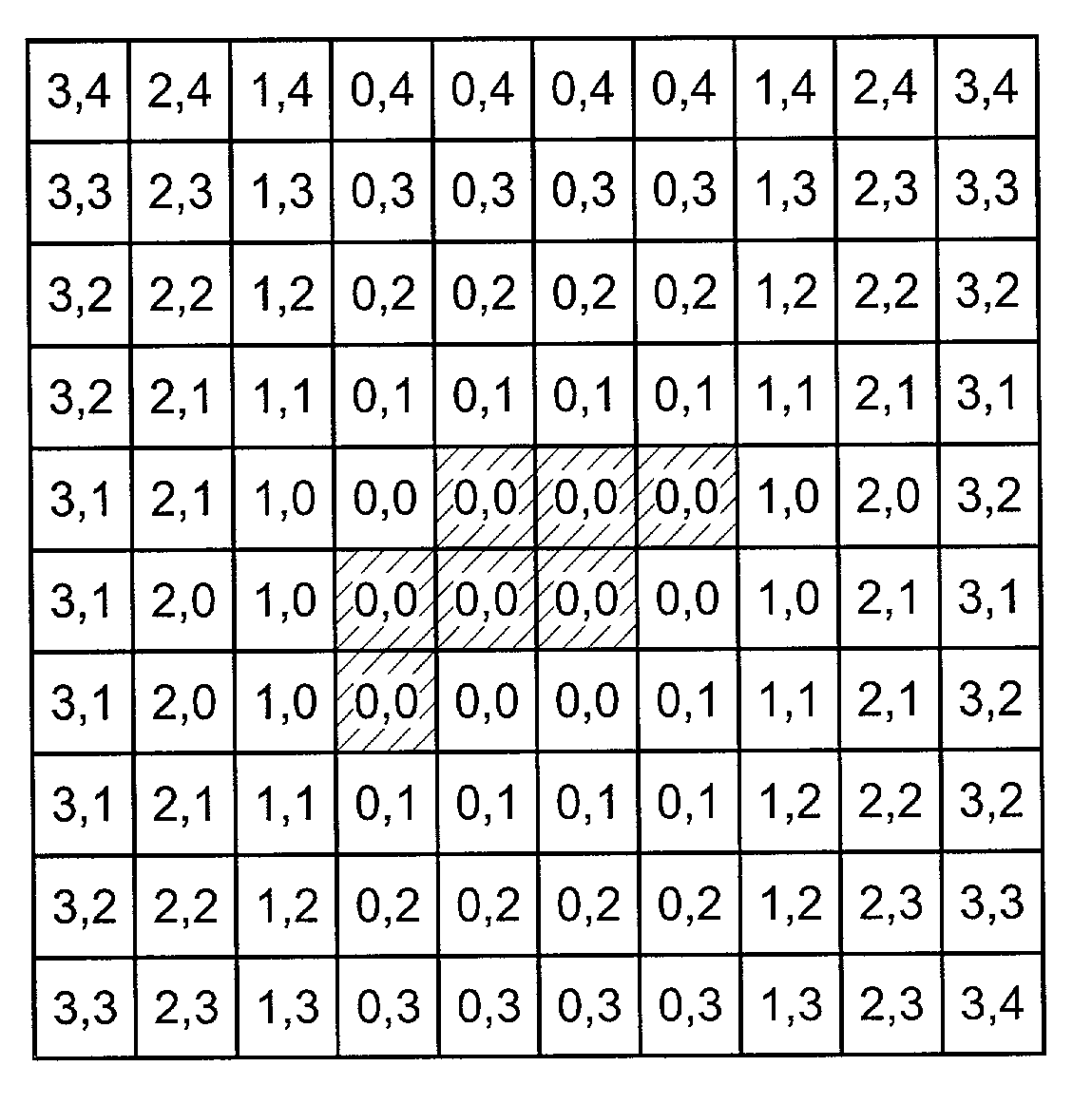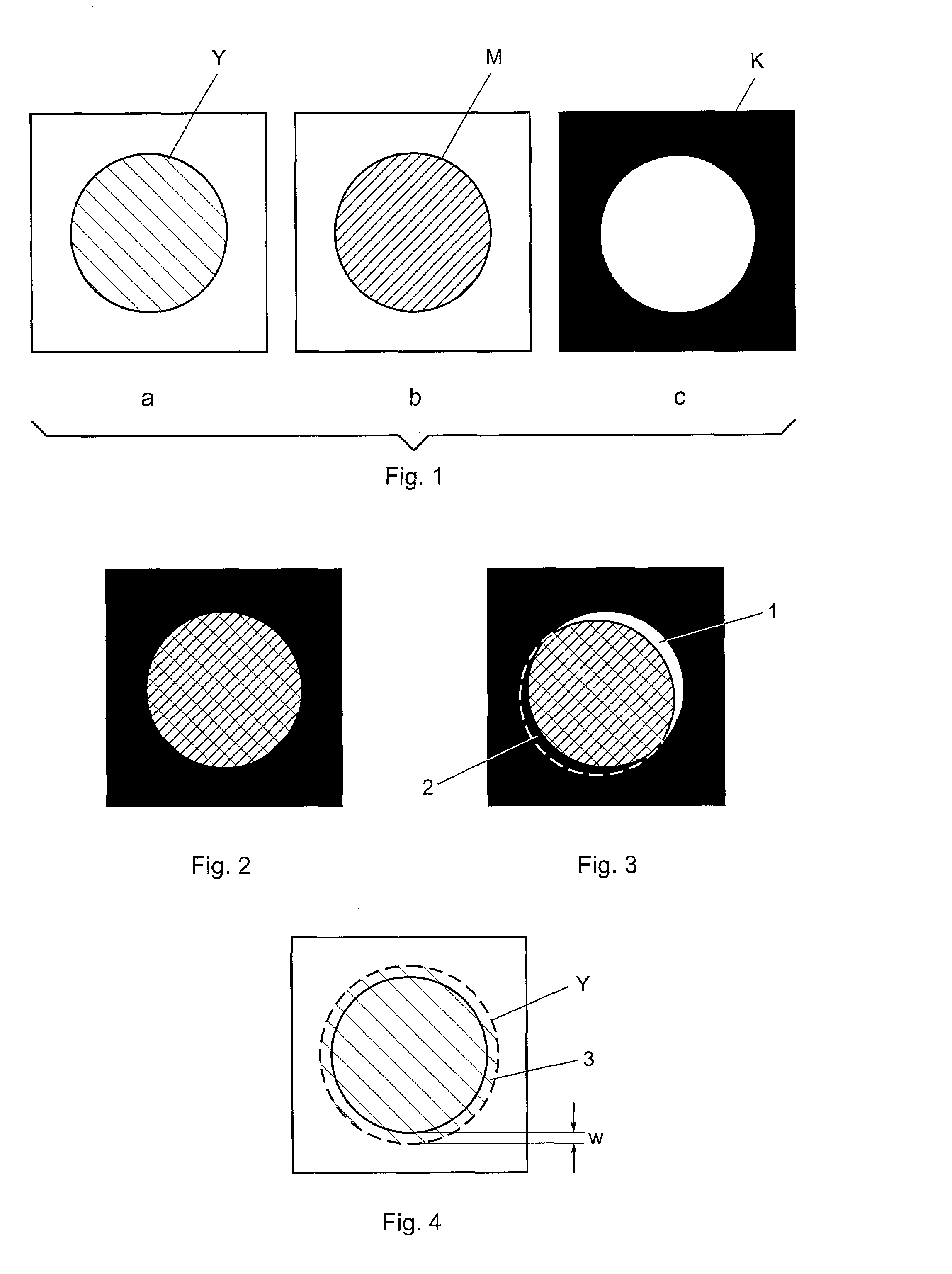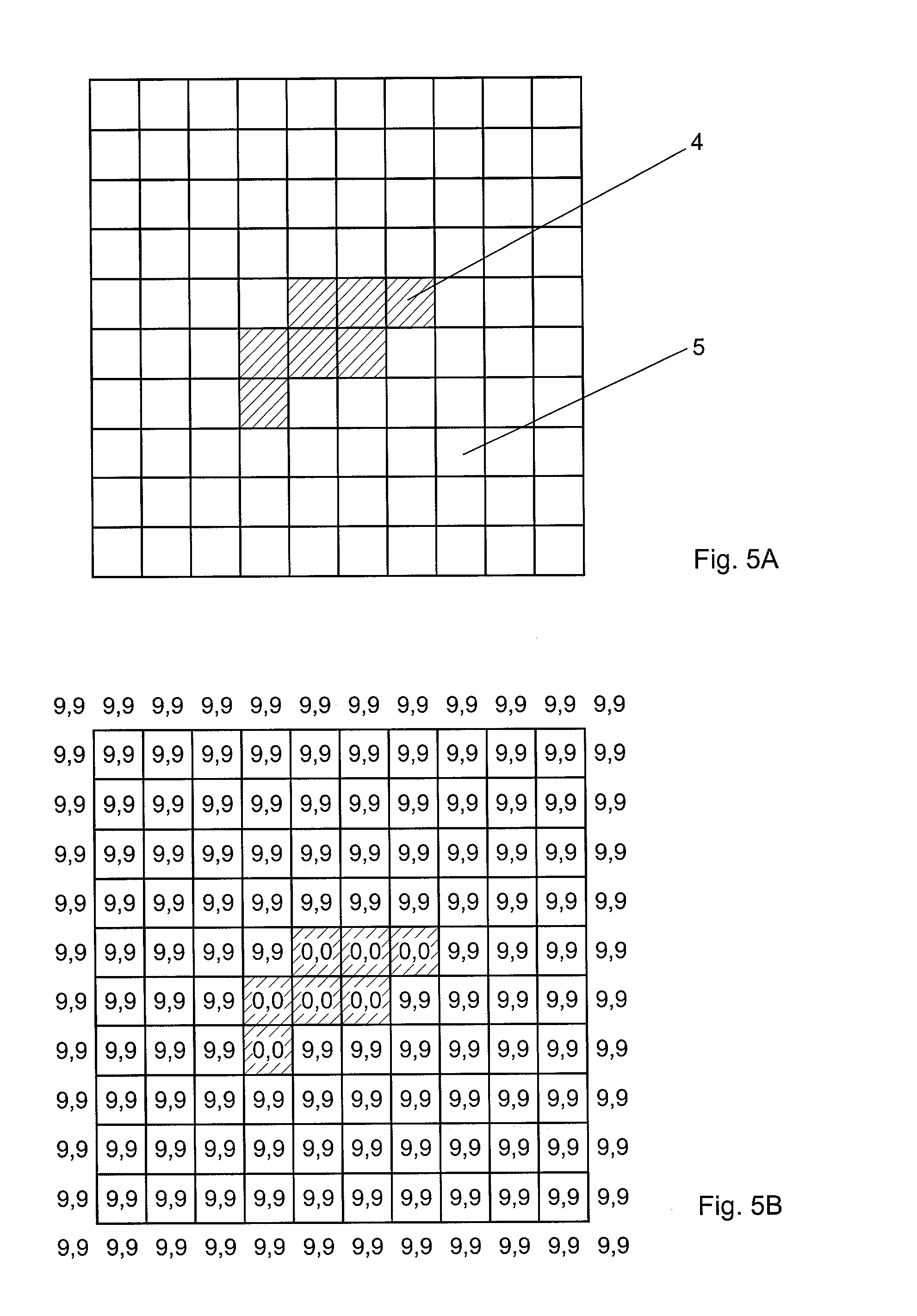Method of producing traps in a print page
a trap and print page technology, applied in the field of digital image processing in reproduction technology, can solve the problems of unprinted strips produced as a result, errors which are produced, and register errors in the printing machine, and achieve the effect of reducing processing time and small amount of memory spa
- Summary
- Abstract
- Description
- Claims
- Application Information
AI Technical Summary
Benefits of technology
Problems solved by technology
Method used
Image
Examples
Embodiment Construction
[0067]According to the method of the invention, distance vectors are in each case determined for the starting point and the end point of the run lengths and are extrapolated as a function of the distance vectors of the adjacent run lengths. FIG. 8 shows a run length 6 which is located in a region of the color 1. The run length 6 describes a sequence of image points of the same color from a starting point A as far as an end point E. A distance vector DA describes the shortest distance of the starting point A from a closest region of another color 2. Likewise, a distance vector DE describes the shortest distance of the end point E from a closest region of another color. The distance vectors in each case have an x component and a y component. Here, the components are designated (DAx, DAy) for the distance vector DA and (DEx, DEy) for the distance vector DE. The magnitudes of the distances are calculated from the components, for example as the Euclidian distance.
|DA|=√{square root over ...
PUM
 Login to View More
Login to View More Abstract
Description
Claims
Application Information
 Login to View More
Login to View More - R&D
- Intellectual Property
- Life Sciences
- Materials
- Tech Scout
- Unparalleled Data Quality
- Higher Quality Content
- 60% Fewer Hallucinations
Browse by: Latest US Patents, China's latest patents, Technical Efficacy Thesaurus, Application Domain, Technology Topic, Popular Technical Reports.
© 2025 PatSnap. All rights reserved.Legal|Privacy policy|Modern Slavery Act Transparency Statement|Sitemap|About US| Contact US: help@patsnap.com



